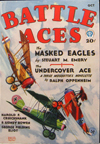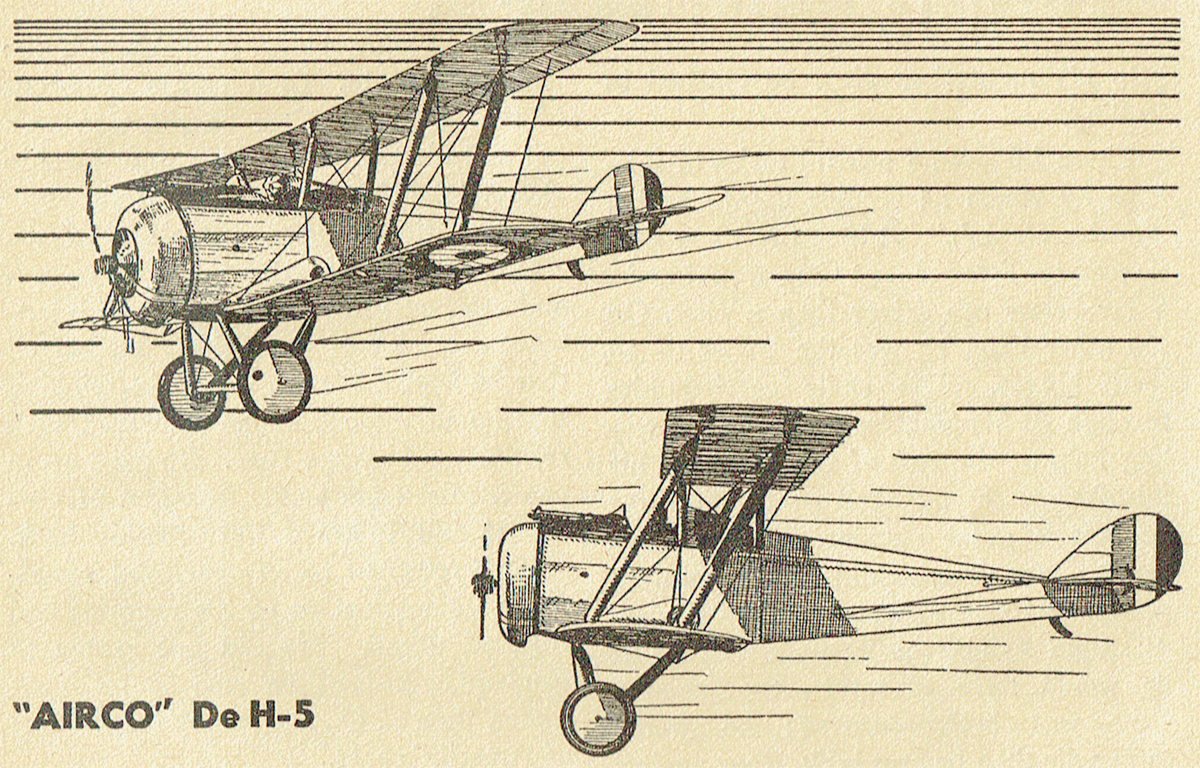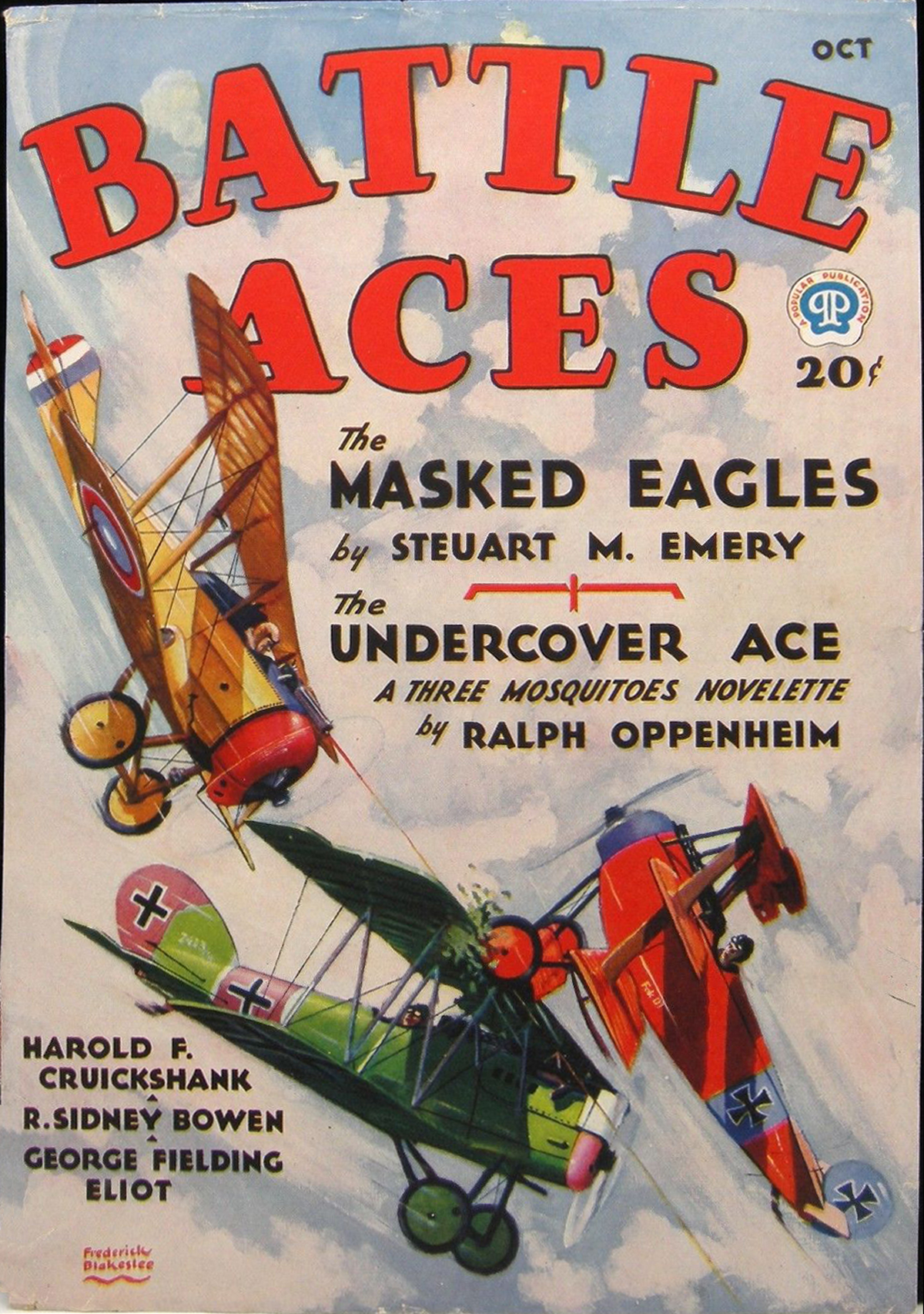“Sky Fighters, May 1935″ by Eugene M. Frandzen
Eugene M. Frandzen painted the covers of Sky Fighters from its first issue in 1932 until he moved on from the pulps in 1939. At this point in the run, the covers were about the planes featured on the cover more than the story depicted. On the May 1935 cover, a de Haviland 5 protects a couple Handley Page 0/400s over a Boche battery!
The Ships on the Cover
THE Handley Page 0/400 twin-engined 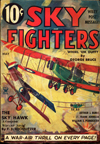 bomber pictured on the cover was the most publicized bomber produced by Great Britain during the World War. This company produced a larger four-engined job, the V/1500, with a wing span of 126 feet toward the end of hostilities. It was built to raid distant German cities: Berlin was to be the first one on which the British steel-cased calling cards were to drop.
bomber pictured on the cover was the most publicized bomber produced by Great Britain during the World War. This company produced a larger four-engined job, the V/1500, with a wing span of 126 feet toward the end of hostilities. It was built to raid distant German cities: Berlin was to be the first one on which the British steel-cased calling cards were to drop.
The 0/400 was a sturdy, dependable old stick and wire job with a top speed about 98 miles per hour. The criss-cross bracing of the under-carriage held the wheels sturdily enough so that the 100 ft. ship could be set down pretty roughly without the landing gear folding and the ship rolling up in a ball. The wings folded back along the sides of the fuselage to conserve space when the ship was hangared. The standard engine equipment was two Rolls Royce Eagle 8s, but Liberties, Sunbeams, Fiats, etc., could be used as alternatives.
But There Was No Eclipse
It is interesting to note that the United States was going to manufacture this bomber, using Liberty motors, to send over to the Yank aviators to use against the Germans. One optimistic orator in Washington proclaimed, “We will blanket the war skies with these huge bombers. We will have such great numbers flying at the Hun that the sun will be blotted out!” Well, there was no eclipse registered during the latter part of the war.
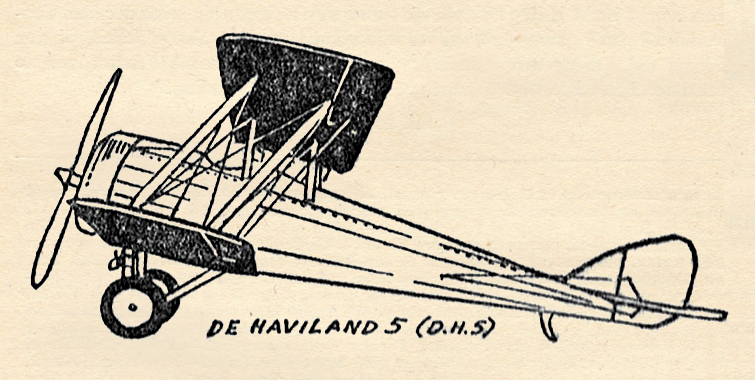
The D.H.5 is one of the long line of de Haviland war planes that are more or less familiar to most readers. The D.H.5’s 25 ft. wings were back-staggered to give the pilot a full vision forward and up. This trick wing arrangement cut down the efficiency of the plane but careful streamlining and reduction of head resistance brought the scout’s rating pretty well up on the right side of the ledger.
It could click off around 105 miles per hour with its 110 h.p. Le Rhone rotary motor whirling at top speed.
Blazing Vickers
The D.H.5 had spotted a German battery dug in the back of the boche lines throwing a barrage of shells toward the British lines. He tilted his ship down and blazed away with his Vickers. The German gun crews took cover for a few minutes and were back at their jobs as soon as the D.H. zoomed. This would not stop the Germans, the pilot realized, so he opened his throttle and tailed for a British bomber squadron’s hangars. The Germans wriggled their fingers at their noses and threw shells into the hot guns faster than ever.
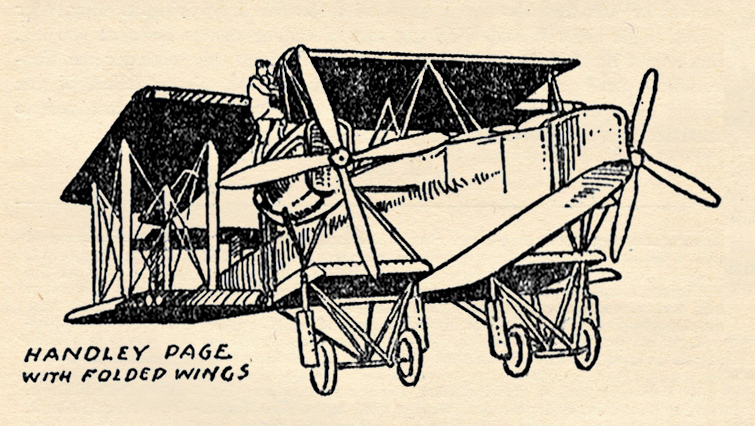
A battery of “heavies” makes plenty of racket and plays havoc with the eardrums of the humans servicing its hungry maws, so it is not a miracle that allowed the tiny D.H. to lead his giant bombers to within striking distance of the Boche battery. The Germans’ first warning of danger was the high screech of whistling wires as the D.H. zipped past the slower bombers and flipped his tail over and up. Down he came with Vickers flaming. At the same moment the Handley Pages let loose a hail of heavy bombs. The enemy’s cannons were tossed into the air, twisted masses of useless steel. The gun crews disappeared in clouds of smoke and debris.
Opinions Differ
Back across the Allied lines the Tommies crawled out of dugouts and from behind sandbags, wiped the dust out of their eyes and went calmly about the business of pointing rifles and pulling triggers. Later they saw the big bombers lumbering overhead toward home.
“They say those airplanes are doing a bit of good now and then,” said one Tommy to another.
“Don’t you believe it,” replied his friend. “It’s us infantry wot’s winning this war!”
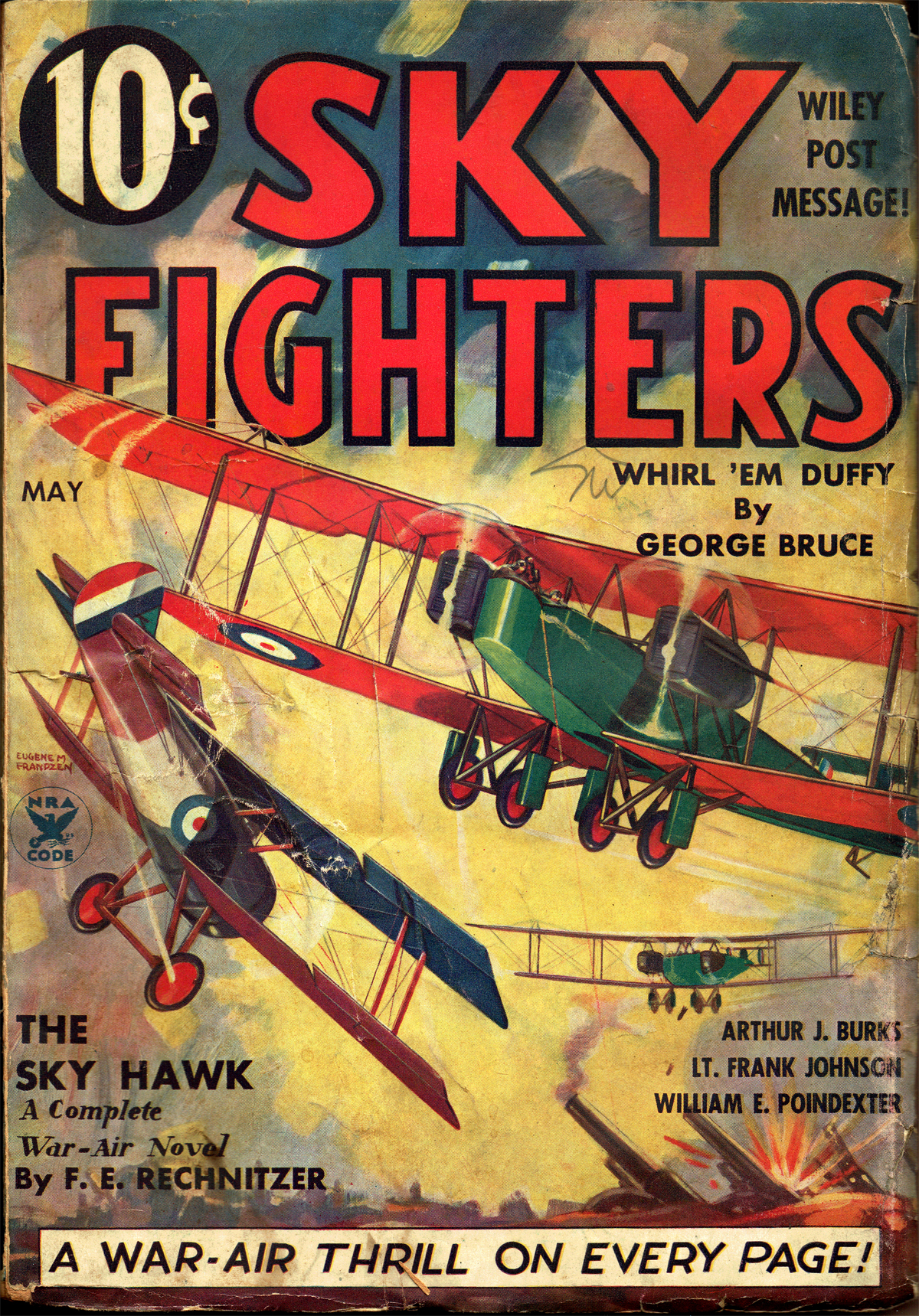
Sky Fighters, May 1935 by Eugene M. Frandzen
(The Ships on The Cover Page)
Next time, Mr. Frandzen features the Fokker D8 and Sopwith Dolphin!





